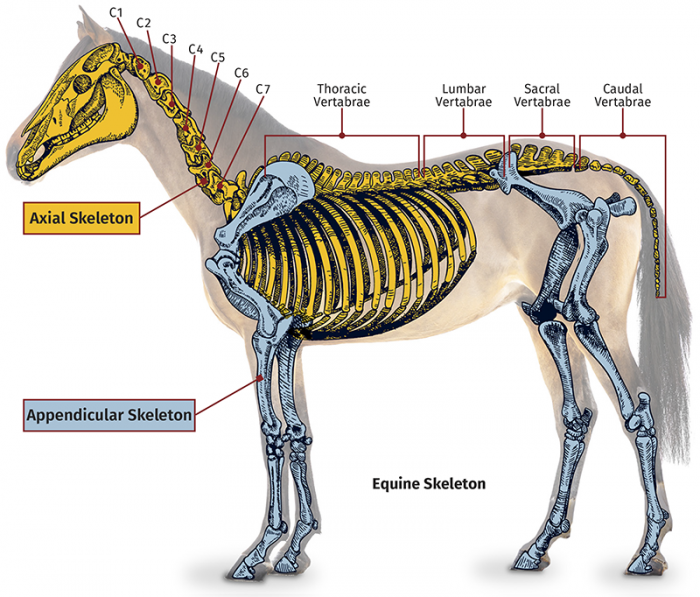
Occurrence of a Congenital Malformation in the Horse's Neck
A horse’s neck has a unique design: it is made to move a lot and difficult to stabilize due to its length and mass. At the base of the neck, the vertebrae make a concave curve. This special shape requires a lot of stabilization, and this is achieved partially through the longus colli muscle: a muscle that consists of 3 parts, all attaching onto the caudal ventral tubercle (CVT) of C6. This structure is severely compromised if the attachment is not present. This study investigated how often this tubercle is missing.
123 cadavers were dissected, ranging in age from 0 to 30 years old. They were divided into 4 categories according to their breed: Thoroughbred, Thoroughbred derivatives, mixed purpose bred and nondescript breeding. After dissection, they were categorized via 6 characteristics based on the vertebral anatomy of C6 and C7. The CVT of C6 could either be completely missing or could be transferred onto C7. This could be bilaterally or unilaterally.
The CVT was absent in 38% of all dissected Thoroughbreds, whereas 0% of the horses bred for a mixed purpose showed this malformation. Out of all the horses that were missing the CVT, half of them had transferred this onto the ventral side of C7. The writers also add that there seems to be a link between this malformation and neurological deficiencies.
This could have significant clinical implications, as the longus colli muscle passes alongside the front of C7, and thus, its function could be altered. A previous post on this website explains more on how this malformation can affect the anatomy of the longus colli muscle, and thus alter its biomechanical function. The implications of cervic vertebral malformations in horses
Are you aware of the subtle signs of pain in your horse?
Expert Opinion by Charlotte De Bruyne
Looking at the studies that have been performed in this field, I believe it is crucial that professionals learn to pick up subtle signs of lameness and pain in horses, as they could indicate an underlying (neck)pathology.
> From: May-Davis, JEVS 34 (2014) 1313-1317. All rights reserved to Copyright © 2014 Elsevier Inc. All rights reserved. Click here for the online summary.


